After using the railway to get from Delhi to Gwalior and then to Bhopal, we picked up a car and driver there for the rest of the journey (to Aurangabad). In fact, our driver, Sanju, was the same young man who had already taken us around the sights of the Bhopal area. He was, therefore, used to us asking to stop the car in order to take photographs of all sorts of weird and wonderful things.
Our next sightseeing destination was Mandu, some 300km south-west of Bhopal. Unfortunately, we had made the mistake of arranging an overnight stay in Indore on the way. It turned out to be a traffic-choked and completely uninteresting place. Sanju, who had not been there before either, seemed equally glad to leave the city first thing in the morning.
We reached Mandu after a couple of hours. Our guidebook described it as “one of India's most romantic and picturesque sites”. As my wife will undoubtedly confirm, I am not an expert on romantic matters, but I certainly agree that Mandu is very picturesque. It is also enormous. The photo below was taken by one of the entrances – you will not be able to make out details of the map on the right, but you will see that there is a very extensive list of markers next to it.
Mandu is spread over an area of around 23 sq.km. The town's history goes back to the beginning of the second millennium, but most of its important monuments date from the 15th and early 16th century and were built under the rule of the Malwa Sultanate. In its heyday it was referred to as the 'City of Joy'. It is on UNESCO's 'tentative lists' of World Heritage sites.
The monuments of Mandu have been divided into three groups (from north to south): the Royal Enclave, the Village Group, and the Rewa Kund Group. Each has its own outstanding sights, but overall the most famous one is probably the Jahaz Mahal (or 'Ship Palace') in the Royal Enclave. It is pictured in the photo at the top of this piece. The name apparently stems from a perceived similarity to an anchored ship, but, whilst I can accept this, I must say that the likeness did not occur to me when I first saw the palace.
The next photo was taken on the roof of the palace – or the 'main deck', if you like.
It was a pure pleasure palace, as is illustrated by the next two shots of elaborately shaped bathing pools within it.
Water features are ubiquitous in Mandu. Just opposite the Jahaz Mahal is this lovely rectangular lake.
Another key monument in the Royal Enclave is the Hindola Mahal ('Swinging Palace'). It gets its name from the sloping buttresses along the sides, which were added to strengthen the walls.
The interior of this palace reminded me a bit of a church. Apparently, it once had a vaulted roof.
As you approach Mandu, and in many places within the site itself, you come across peculiar looking trees like these.
They are baobab trees, still leafless at this time of year (March). The reason why I point this out is that you would expect to find them in parts of Africa, but not here in India – at least not outside a botanical garden. Mandu's rulers must have taken a fancy to them and imported some specimens (or, more likely, some seeds) from across the ocean – Madagascar is a likely source. Clearly, the soil and climate here turned out to be ideal for them.
You can see large oval fruits high up in some of the baobab trees and we were pleased to find that they are actually for sale locally. The baobab fruits are those at the front of the cart.
Shaking the fruit produces a rattling sound (like maracas) and when you break into the shell you discover a few dozen hard (hazelnut-sized) seeds, coated in some white powder. The powder is the edible part. Its taste reminded me of tamarind.
We had an excellent guide, who was clearly keen to create a memorable experience for us. It turned out that he had had a Mrs. Hillary Clinton as his client a few days earlier. I am sure that she was as satisfied with his services as we were. Anyway, I mentioned to him our interest in stepwells and less than 20 minutes later we were looking at this one:
It is the so-called Ujala Baoli ('Bright Well'). Victoria Lautman's excellent book (which I referred to in Pt.3) provides a detailed description and more photos on pp.110/111. There is a second well – the Andheri Baoli ('Dark Well') – not far away. The contrasting names are due to the fact that this one has a cover. The wells are still in use today. We met the woman below by the Andheri Baoli – and, yes, our guide asked her for permission before I took the photo.
There are two key sights within the Rewa Kund Group: Baz Bahadur's Palace and Rupamati's Pavilion. They can be seen in the next two photos.
The designation Rewa Kund, incidentally, stems from the name of the nearby reservoir. The tree in the background of the first shot is another baobab. Baz Bahadur was the last Malwa sultan and reigned from 1555 onwards. Rupamati was his favourite wife. He allegedly neglected the affairs of state and abandoned himself to sensual pleasures because of his enchantment with her. Whether that is completely true or not, Mughal emperor Akbar's forces succeeded in conquering Mandu in 1561. Rupamati was captured and subsequently killed herself. While Baz Bahadur managed to regain control of Mandu for a brief period, he was defeated again (and killed) in 1562.
We left the Village Group till last, not least because it gave us a good opportunity for relaxing with a pot of tea in one of the little restaurants on the way there. The photo below shows Hoshang Shah's Tomb, dating from 1440. It houses the remains of Malwa's most powerful sultan.
In the background you see parts of the Jama Masjid, said to have been inspired by the central mosque in Damascus. The next photo shows its interior.
Opposite the mosque are the remains of the Ashrafi Mahal (a madrasa) and the Victory Tower. The latter was erected in 1443 to celebrate the outcome of a battle against the kingdom of Mewar. Note that the stalls in the square have baskets of baobab fruits for sale.
The Ashrafi Mahal is depicted more clearly in the next shot.
We left Mandu in the late afternoon, but not before stopping off at various viewpoints at the dramatic gorges in the vicinity.
Our overnight hotel, the Jhira Bagh Palace, was just outside the city of Dhar, a short drive away. It certainly was palatial – and, as it turned out, we were the only guests that night. To say that we were well looked after is an understatement. In the morning we had a chance to inspect their small collection of classic vehicles. I liked this little bus in particular.
To be continued with Pt.5: Maheshwar

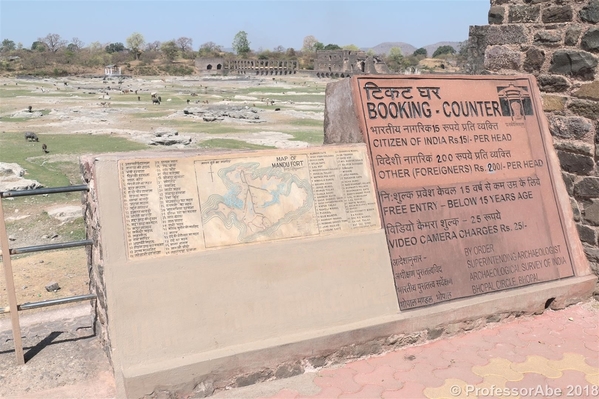
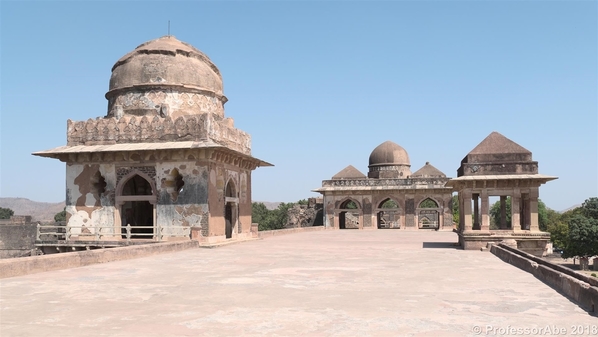
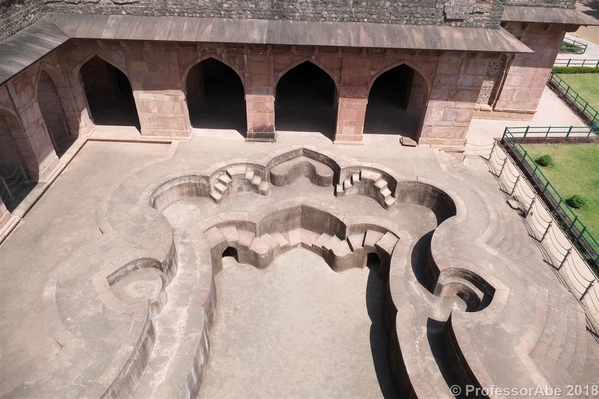
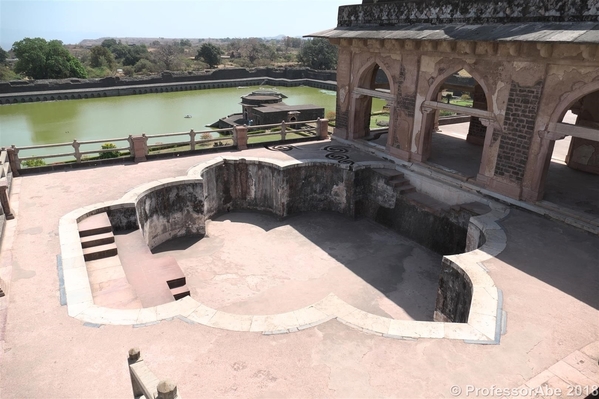
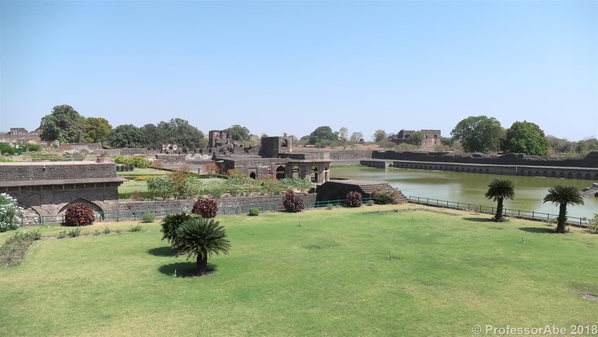
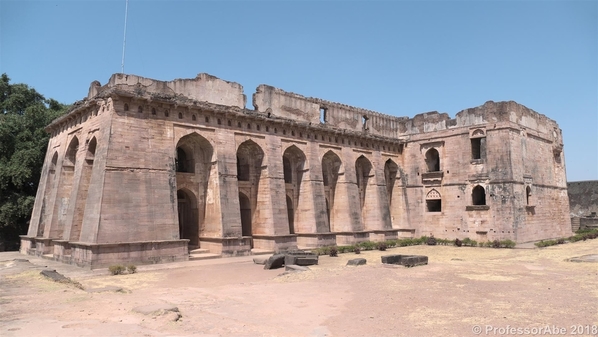
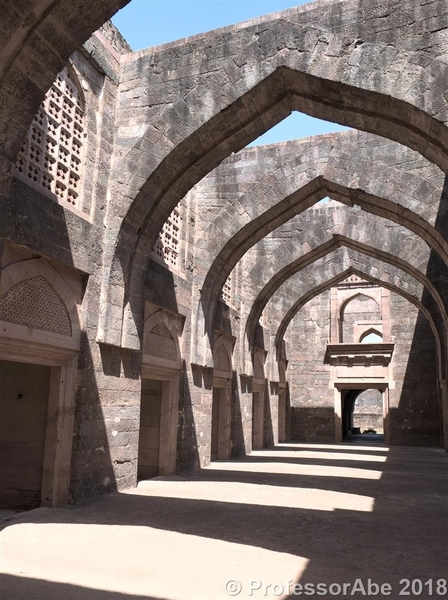
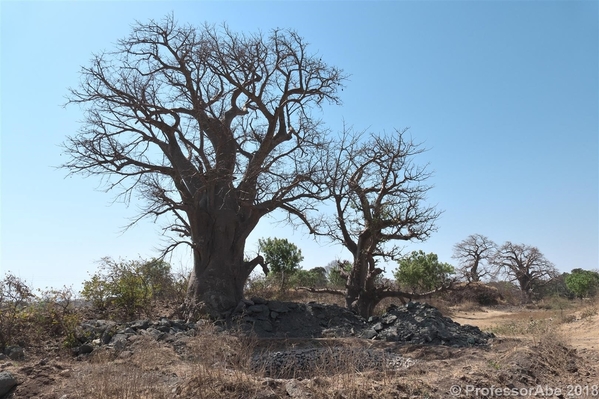
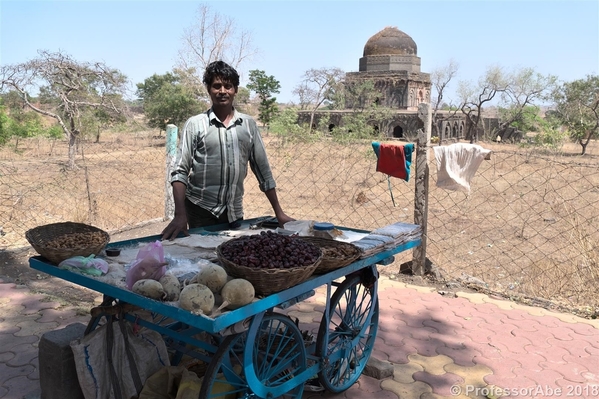
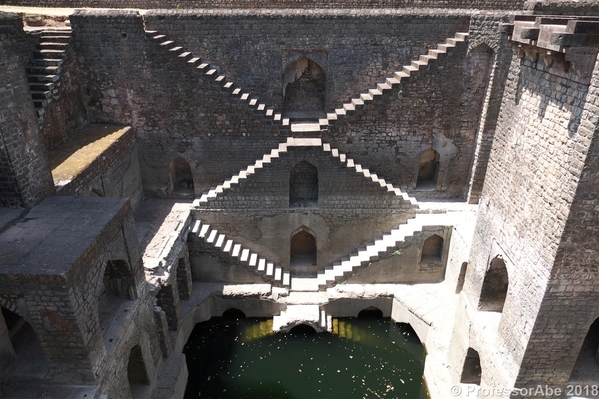
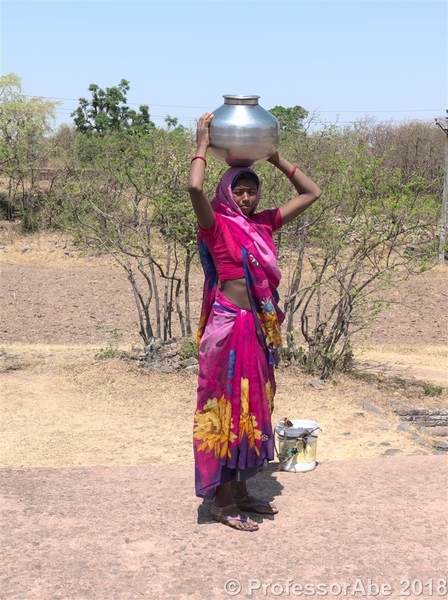
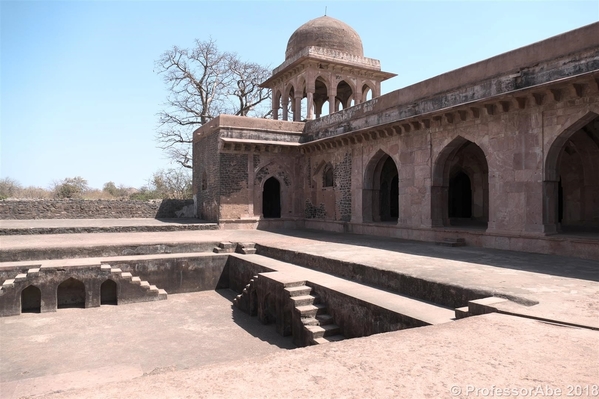
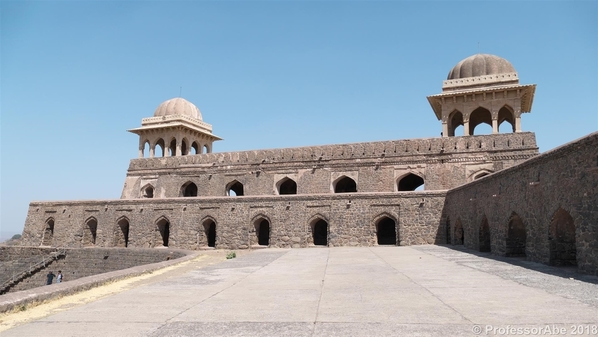
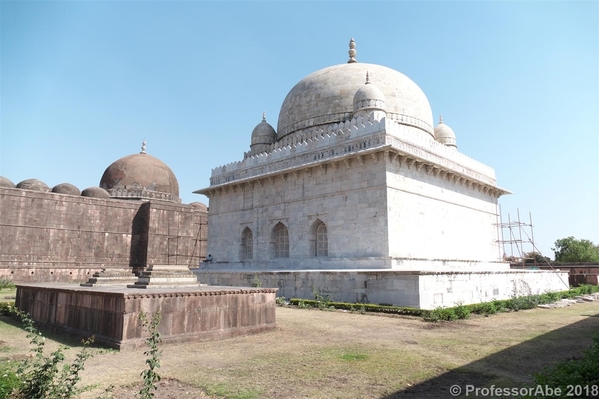
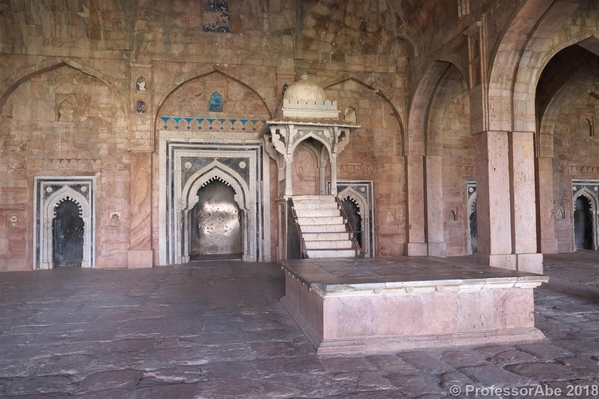
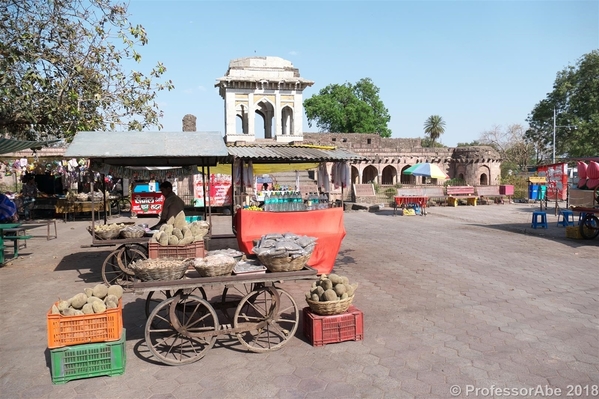
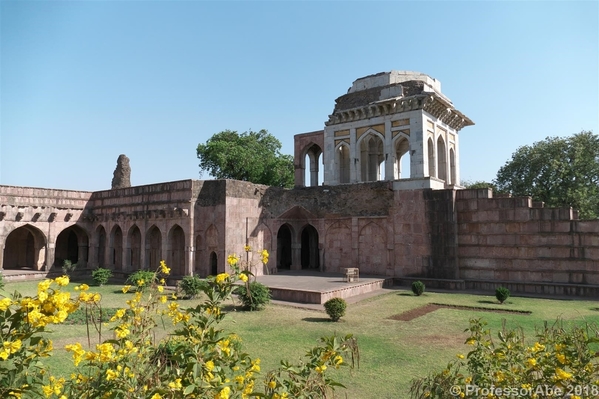
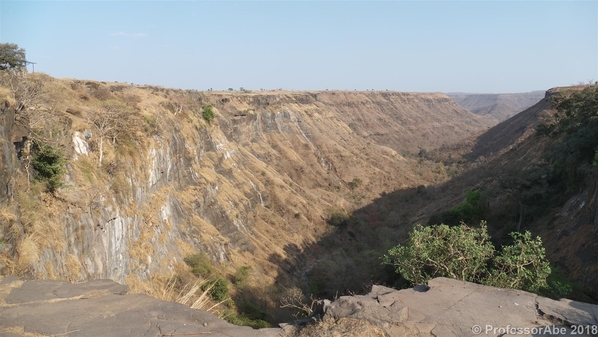
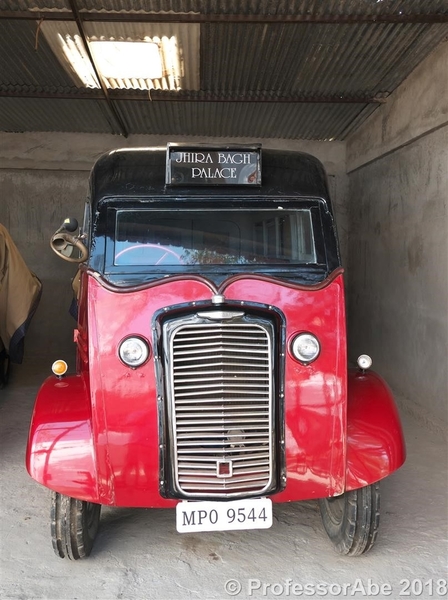
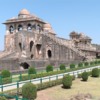



















Comments (0)